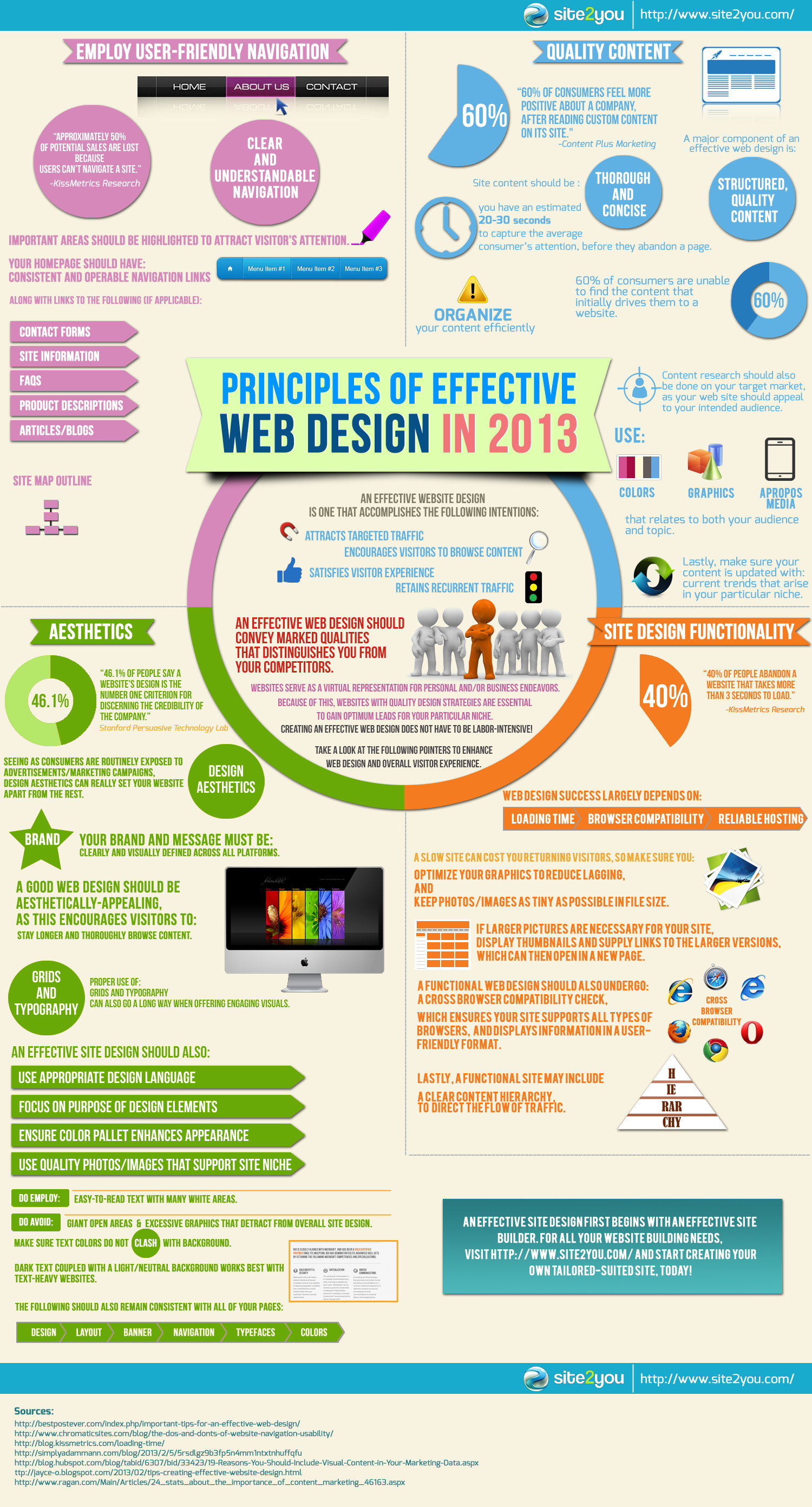The Development Of Website Design: After That And Now
The Development Of Website Design: After That And Now
Blog Article
Authored By-Johnsen Clarke
In the past, websites were straightforward and focused on info. Navigating was direct, and layout was for desktops. Now, customer experience is essential. Information guides styles for easy navigating. Receptive designs match different devices. Today, dark setting decreases strain, and minimalist food selections improve navigating. Interactive features involve users, and strong visuals stand out. AI assimilation increases involvement. See just how style has advanced to enhance your online journey.
Early Days of Web Design
In the early days of web design, simpleness reigned supreme. Web sites were standard, with restricted shades, typefaces, and formats. The emphasis got on offering details rather than showy visuals. Customers accessed the internet with sluggish dial-up links, so rate and functionality were key.
Navigating menus were straightforward, normally located at the top or side of the page. Web sites were made for computer, as mobile surfing had not been yet widespread. Web content was king, and designers prioritized simple readability over intricate layout elements.
HTML was the main coding language used, and designers had to function within its restraints. Computer animations and interactive functions were minimal contrasted to today's requirements. why not try these out were fixed, with little vibrant web content or tailored customer experiences.
Rise of User-Focused Style
With the advancement of web site design, a shift in the direction of user-focused design principles has ended up being progressively noticeable. Today, developing web sites that focus on individual experience is vital for involving site visitors and attaining business goals. User-focused layout includes comprehending the needs, preferences, and behaviors of your target market to tailor the web site's format, material, and features accordingly.
Developers now carry out thorough research study, such as individual surveys and usability screening, to gather insights and responses straight from customers. This data-driven method helps in producing instinctive navigating, clear calls-to-action, and visually appealing interfaces that resonate with site visitors. By putting the user at the facility of the design procedure, websites can provide an extra personalized and satisfying experience.
Responsive style has likewise emerged as a key aspect of user-focused design, making certain that internet sites are maximized for various devices and display sizes. This versatility boosts accessibility and use, dealing with the varied methods customers connect with web sites today. Essentially, the surge of user-focused design indicates a change in the direction of creating digital experiences that focus on the demands and expectations of completion customer.
Modern Trends in Website Design
Check out the most up to date trends forming web design today. One famous pattern is dark setting design, offering a streamlined and contemporary look while lowering eye stress in low-light environments. One more crucial fad is minimalist navigating, streamlining menus and improving individual experience by concentrating on essential elements. Incorporating micro-interactions, such as computer animated switches or scrolling impacts, can create an extra appealing and interactive website. Receptive layout continues to be critical, guaranteeing seamless user experiences across numerous gadgets. Furthermore, using vibrant typography and asymmetrical layouts can include aesthetic rate of interest and accentuate specific content.
Incorporating AI modern technology, like chatbots for consumer support or tailored recommendations, boosts customer engagement and enhances processes. Availability has also come to be a significant fad, with developers focusing on comprehensive design methods to accommodate varied individual requirements. Welcoming sustainability by maximizing site performance for speed and performance is one more arising fad in website design. Working together with customer feedback and information analytics to repeat and boost layout continually is important for remaining relevant in the ever-evolving electronic landscape. By embracing these modern-day fads, you can create an aesthetically appealing, easy to use web site that reverberates with your audience.
Verdict
As you assess the evolution of internet site style from the very early days to currently, you can see exactly how user-focused layout has actually become the driving force behind contemporary trends.
Embrace the journey of adjustment and adjustment in web design, constantly maintaining the user experience at the forefront.
Tippingpointdigital
Stay present with the current patterns and technologies, and never ever quit progressing your method to develop aesthetically spectacular and user-friendly sites.
Advance, adapt, and produce - the future of web design is in your hands.
